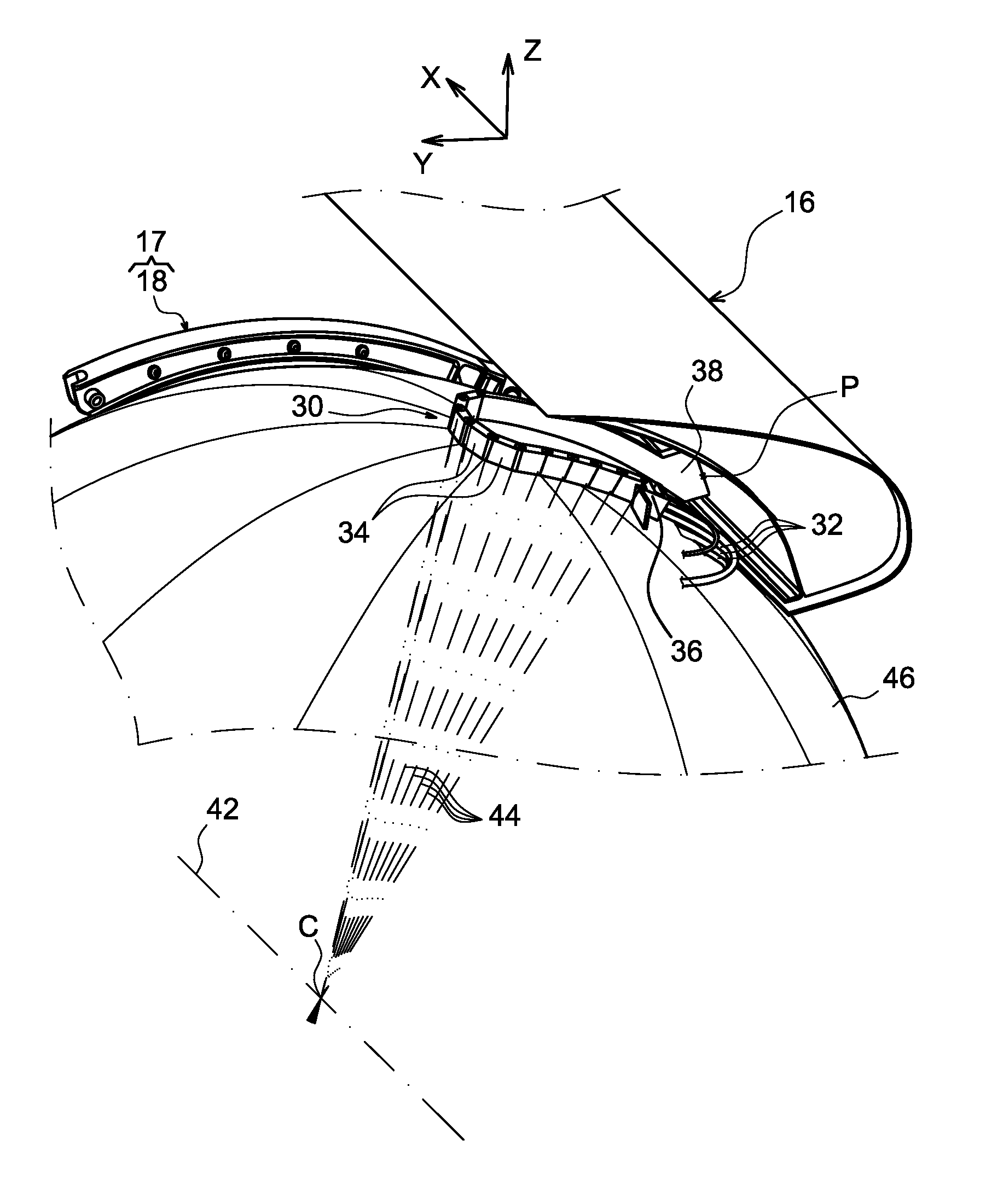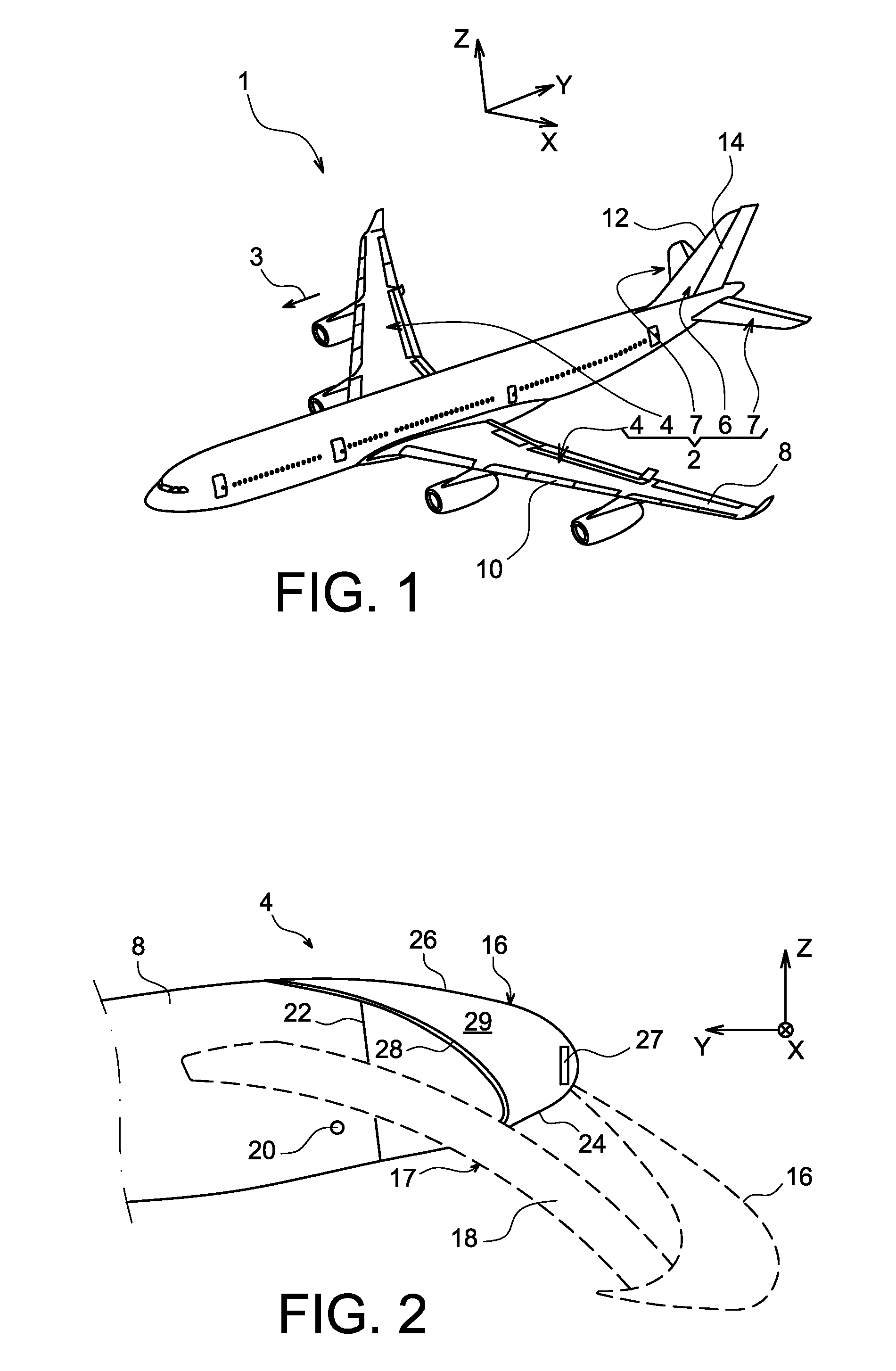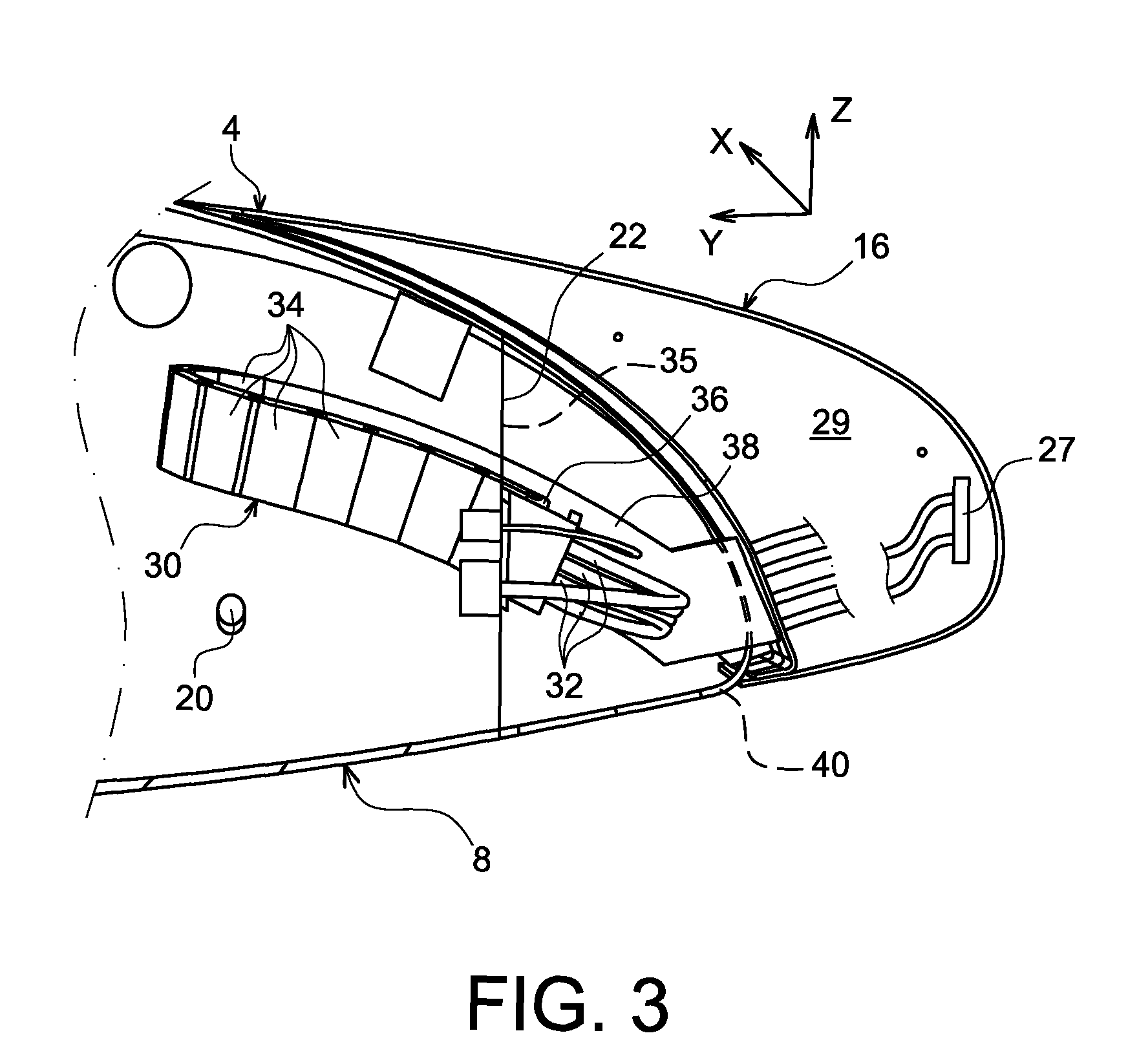Cable carrier chain for leading edge mobile slat for an aircraft wing
a mobile slat and carrier chain technology, applied in the direction of hoisting chains, wing adjustments, hauling chains, etc., can solve the problems of large size along the direction of the wing span and/or along the chord, and the risks of mechanical interference between the different elements present in the forward part of the fixed central body are not negligible, so as to improve the global aerodynamic efficiency of the aircraft, reduce the risk of mechanical interference with the different elements already present in the forward part of the fixed
- Summary
- Abstract
- Description
- Claims
- Application Information
AI Technical Summary
Benefits of technology
Problems solved by technology
Method used
Image
Examples
Embodiment Construction
[0042]FIG. 1 shows an aircraft with a wing 2 composed of a plurality of wing elements, also called aerodynamic lift surfaces.
[0043]In the following description, the terms “forward” and “aft” should be considered relative to a direction of progress of the aircraft that occurs as a result of the thrust applied by the aircraft engines, this direction being shown diagrammatically by the arrow 3.
[0044]The wing elements of the aircraft 1 include two principal wings 4, a vertical stabiliser 6 and two horizontal stabilisers 7 at the aft end of this aircraft. Each of the two wings 4 may be fitted with at least one leading edge mobile slat connected to a wing fixed central body through a cable carrier chain according to the invention as will be shown below in a detailed manner for one of these two wings.
[0045]Concerning the wings 4, as mentioned above, each wing comprises a wing fixed central body 8, also called the principal central portion, this body forming practically the entire wing and ...
PUM
 Login to View More
Login to View More Abstract
Description
Claims
Application Information
 Login to View More
Login to View More - R&D
- Intellectual Property
- Life Sciences
- Materials
- Tech Scout
- Unparalleled Data Quality
- Higher Quality Content
- 60% Fewer Hallucinations
Browse by: Latest US Patents, China's latest patents, Technical Efficacy Thesaurus, Application Domain, Technology Topic, Popular Technical Reports.
© 2025 PatSnap. All rights reserved.Legal|Privacy policy|Modern Slavery Act Transparency Statement|Sitemap|About US| Contact US: help@patsnap.com



